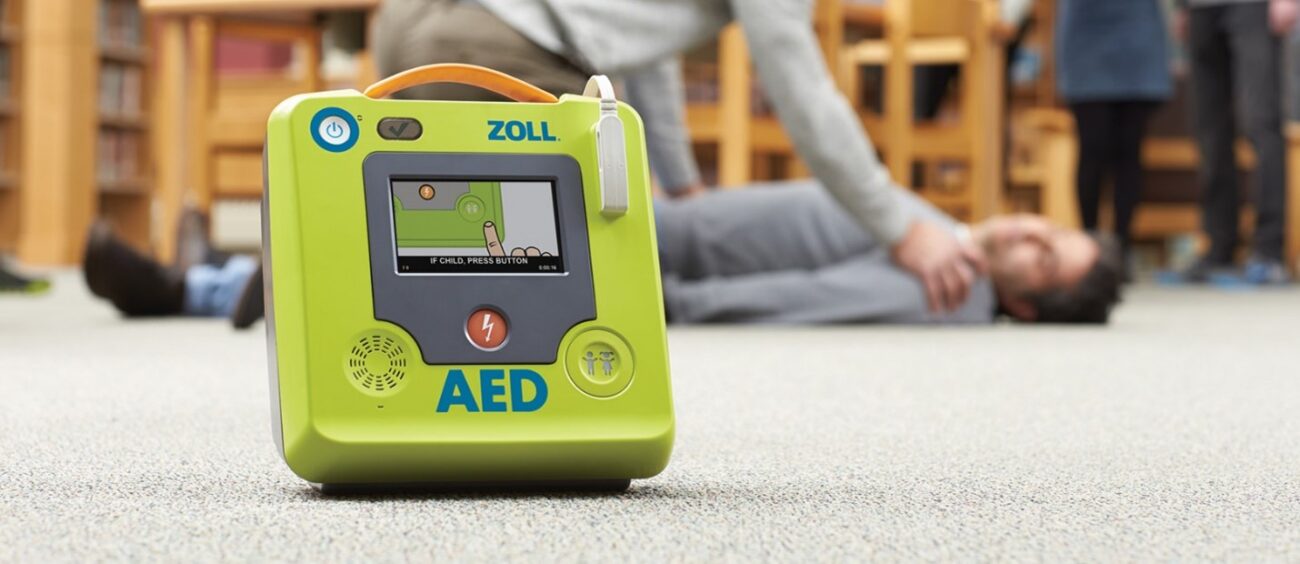
Blog
Ontario AED Mandate for Construction 2025

Starting in 2025, the Ontario government plans to require Automated External Defibrillators (AEDs) on many construction sites. If a site runs for three months or more and has 20 or more workers, it must have an AED on-site. This is part of the Working for Workers Seven Act, 2025, showing Ontario’s strong focus on worker safety—especially for those at risk of cardiac arrest.
While the law is not final yet, safety managers should stay alert and start preparing now. A reimbursement program from the Workplace Safety and Insurance Board (WSIB) may help cover AED costs.
In this post, we’ll break down what the new rule means for your site and how to get ready. Learn more about the mandate here.
What Is the New AED Rule?
The new AED mandate for Ontario construction sites signifies a substantial shift in workplace safety standards. Let’s examine the key elements of this groundbreaking legislation.
Key Requirements for Construction Sites
The Ontario government’s proposal mandates Automated External Defibrillators (AEDs) on certain construction sites.
The legislation aims to enhance emergency response capabilities in high-risk settings. Construction sites frequently present unique challenges for emergency medical services, making on-site AEDs essential for immediate intervention.
The rule applies to construction projects that:
- Last three months or longer
- Have 20 or more workers
These sites must have at least one AED available and ready to use. Emergency crews can face delays reaching construction areas. AEDs on-site can make a life-saving difference.
Employers must also keep AEDs in good working condition. This means:
- Checking batteries
- Replacing pads
- Doing regular inspections

Timeline and Implementation Details
The AED mandate will be implemented gradually, allowing construction companies time to adapt. According to industry reports, the rule is expected to begin in June 2025. It will roll out in stages to give companies time to adjust.
Start preparing now:
- Plan your budget for AED purchases
- Assign staff to oversee AED safety
- Add AED procedures to your current safety plans
The government will offer detailed guidelines to help with placement, use, and upkeep.
Contact us for additional resources and assistance navigating these changes.
Why It Matters
The introduction of mandatory AEDs on construction sites is expected to dramatically improve workplace safety. AEDs can raise the survival rate for sudden cardiac arrest by up to 75%.
This mandate addresses the unique risks faced by construction workers. It’s no surprise that the job is tough and physically demanding. The risk of heart-related emergencies is higher than in many other jobs. Having an AED nearby could save a life.
This rule also helps build a stronger safety culture on-site. It encourages everyone—from workers to managers—to be prepared for any emergency. As the implementation date approaches, construction companies must take proactive steps to ensure compliance with the new AED mandate.

How to Prepare Your Site
- Here are simple steps to meet the new AED requirement:
- Check your sites – Do they meet the rule’s size and duration?
- Choose the right AED – Pick a model that works well in construction settings.
- Plan AED placement – Make sure the AED is easy to reach from anywhere on-site.
- Write clear protocols – Include AED use and checks in your safety policies.
- Train staff – Assign responders and make sure each shift has someone trained to use an AED.
Cost and Reimbursement
The Ontario government knows this rule may cost money. That’s why the WSIB is offering a reimbursement program to help pay for AEDs.
To qualify, keep detailed records of:
- AED purchases
- Maintenance costs
- Related training
You may also want to look for extra funding through safety grants or health partnerships.
Contact us for assistance with applying for reimbursements and grants.
Training and Upkeep Matter
Just installing AEDs isn’t enough. Workers must know how to use them in emergency situations.
Make sure you:
- Schedule regular training (including CPR)
- Check batteries and pads often
- Update software when needed
Consider partnering with professional training organizations to provide ongoing AED and CPR certification for your workforce. This not only ensures compliance but also cultivates a culture of safety and preparedness.
Final Thoughts: Be Ready, Be Safe
This upcoming AED rule is a smart move for construction safety. With proper planning, you can meet the requirements and protect your team.
Stay informed as the implementation date approaches.
FAST Rescue is here to help. We offer:
- AED setup plans tailored to your site
- Certified training programs
- Ongoing support and maintenance
Don’t wait. Contact FAST Rescue today to book a consultation and get your site ready.
Connect with us on social media to stay updated on the latest in workplace safety: Facebook, LinkedIn & Instagram.
Join our community and be a part of the conversation!








